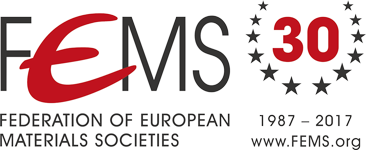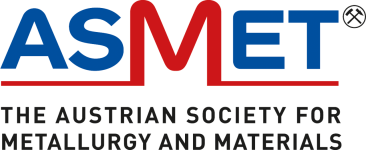EUROMAT 2021 will definitely take place in September 12-16, 2021 (physically or virtual depending on regulations concerning COVID-19)
EUROMAT 2021
EUROPEAN CONGRESS AND EXHIBITION ON ADVANCED MATERIALS AND PROCESSES

ASMET is pleased to invite you to join EUROMAT 2021 in Graz.
EUROMAT is the premier international congress in the field of materials science and technology in Europe. This conference will continue a successful series of material science conferences. The main objective is to foster knowledge transfer and exchange of experiences amongst delegates with academic and industrial backgrounds.

Graz – City of Design
With its strong history of design culture, the city of Graz is committed to ebracing design and the creative industries as a strategic tool for socio-economic and cultural development.
The city of Graz has been included in the UNESCO list of World Heritage Sites.
Graz or rather Austria is well known for its great hospitality, the fantastic white wines, unique pumpkin seed oil, top class cuisine and its short distances.
The Stadthalle Graz is an ideal congress venue,located within easy reach of the city centre, hotels are in direct proximity, and it is only 10 km
away from the Airport Graz. Read about online casinos in the Czech Republic minimuzeum.com.
Areas
A. Functional Materials
B. Structural Materials
C. Processing
D. Characterization and Modelling
E. Energy
F. Biomaterials
G. Education, Strategy and Technology Transfer
H. Materials for Circularity and Sustainability
Plenary Speakers
Merete Tangstad, Professor
Lore Thijs
Helmut Clemens, Professor Dr.
Claudia Draxl, Professor Mag. DDr.
Elvira Fortunato, Professor
Josef Fugger, Dipl.-Ing.
Important Dates
Abstract submission (300 words): January 31, 2021
Notification of acceptance: April 16, 2021
Details
Details
Submit Abstract
PLENARY SPEAKERS
Merete Tangstad
NORWEGIAN UNIVERSITY OF SCIENCE AND TECHNOLOGY (NTNU)
Lore Thijs
DIRECT METAL PRINTING (DMP) ENGINEERING
Helmut Clemens
CHAIR OF PHYSICAL METALLURGY AND METALLIC MATERIALS, DEPARTMENT OF MATERIALS SCIENCE
Claudia Draxl
INSTITUTE FOR THEORETICAL SOLID STATE PHYSICS AT HUMBOLDT-UNIVERSITÄT BERLIN, CHAIR OF HTE “SOLID-STATE THEORY” RESEARCH GROUP
Elvira Fortunato
VICE-RECTOR FOR RESEARCH UNIVERSIDADE NOVA DE LISBOA, DIRECTOR CENIMAT – CENTRE FOR MATERIALS RESEARCH, PROFESSOR AT MATERIALS SCIENCE DEPARTMENT, FCT, UNIVERSIDADE NOVA DE LISBOA
Josef Fugger
INFINEON TECHNOLOGIES AUSTRIA AG






